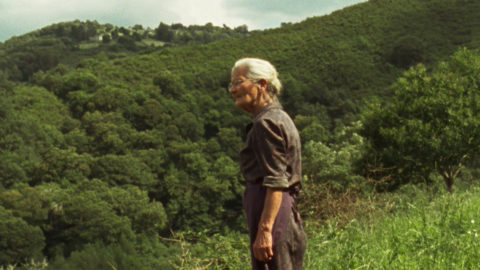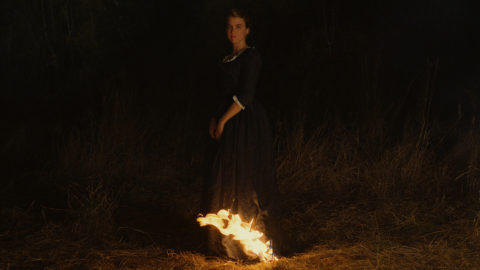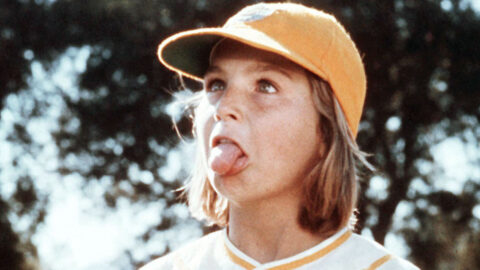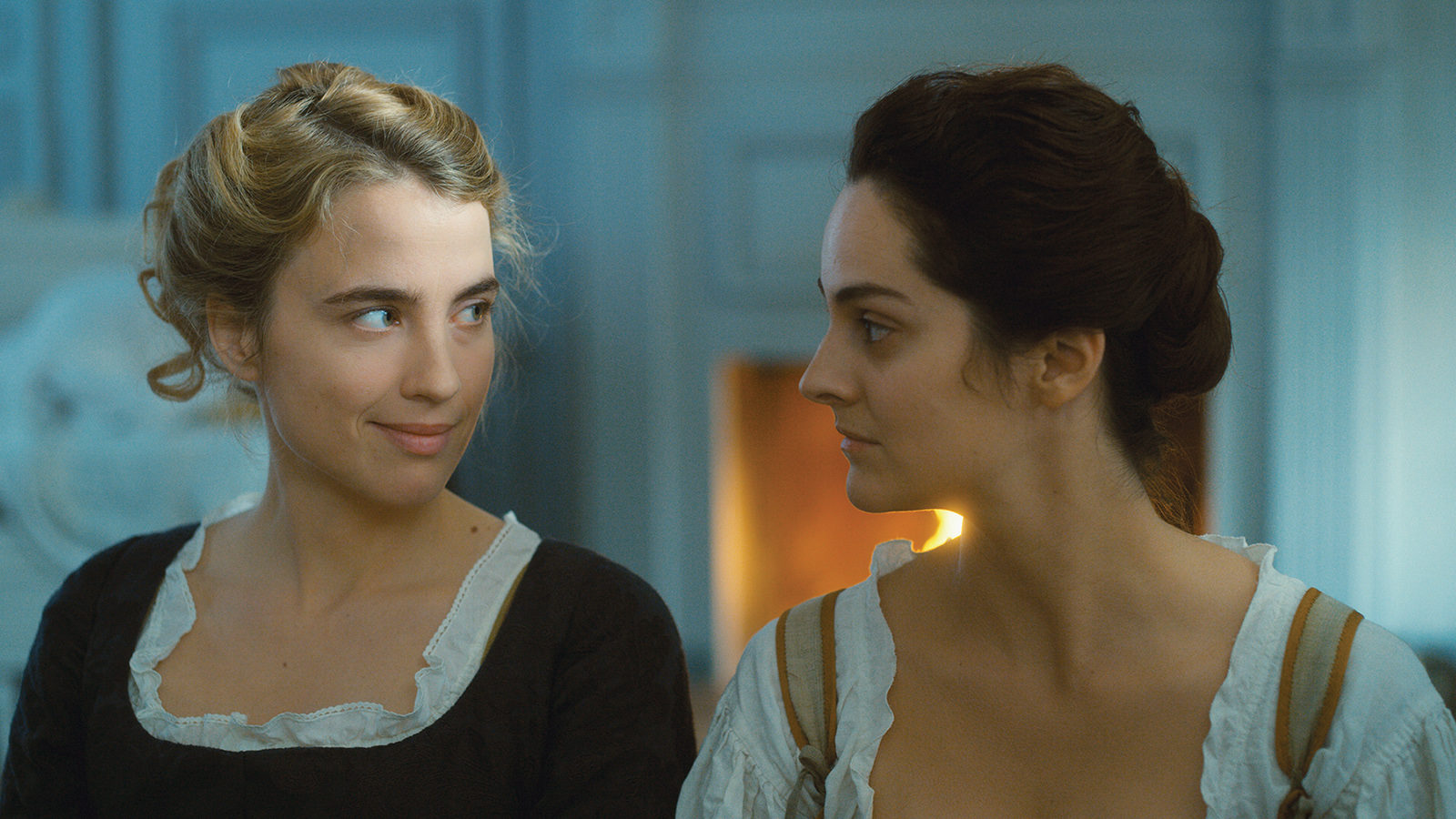
Interview: Céline Sciamma
This interview with the director of Portrait of a Lady on Fire took place at Cannes, where the film premiered in competition.
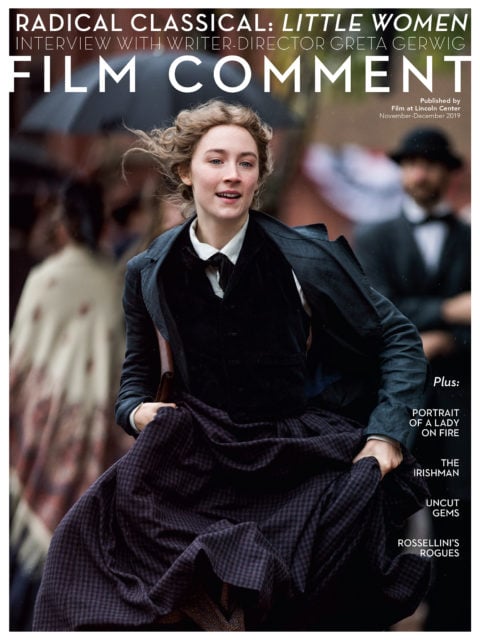
To what degree were you thinking about the many movies that have been made about a male artist and the woman who inspired him?
I didn’t have to think much about that because basically we know by heart the story as it has been told so far, so I didn’t have to craft my answer to that. I wanted to tell another story, not didactically, but in very emotional, sentimental, political ways. At the center of the film is this idea that there is no muse, or that it’s a beautiful word for hiding the reality of how women have been collaborating with artists. I wanted to portray the intellectual dialogue and not to forget that there are several brains in the room. We see how art history reduces the collaboration between artists and their companions: before, a muse was this fetishized, silent, beautiful woman sitting in the room, whereas we now know that Dora Maar, the “muse” of Picasso, was this great Surrealist photographer. And Gabrièle Buffet-Picabia, the companion of Francis Picabia, was intensely involved in his evolution. I wanted to portray the reality of that in the process of actually making a film in strong collaboration with my actresses.
And was that collaboration different, or more consciously a collaboration, than in your earlier films?
Yes, mostly because so far I’ve only worked with very young casts that were nonprofessional—kids or teenagers that I chose who became actresses in front of the camera. It’s not the same job at all because when you work with nonprofessionals you are totally in charge of their limits and there is no negotiating with that, so there is this strong responsibility. Whereas with grown women and professional actresses there are no limits and you can be surprised by the collaboration between them. So it’s not even the same job. It’s really the step I wanted to take with this film.
This is a great love story—and there are very few movies about grownups and lesbian desire.
Well, there’s Carol, but when I discovered it here [in Cannes], I felt exactly what you describe. I felt like I’ve rarely seen this.
In the sex scenes in this movie and their relationship to the lives of these women’s minds, it’s more complex than Carol. This is much more a give-and-take.
Yes, I was obsessed with an idea that grew more and more important in the process of actually making the film. The casting really put the idea at the center of the film: I wanted a love story with equality. It’s something you don’t get to see much, and I think it’s something that is possible because of the queerness of their story. As Héloïse says, it almost feels like they’re inventing something. I knew Adèle [Haenel] would be there, but when I met Noémie [Merlant] for the leading part, I was totally amazed by this equality—the same age, the same height, this intensity—and I thought, well, that’s the heart of the film: equality. Even in friendship, even with Héloïse’s mother, and within the love dialogue, there’s a horizontal conversation. Also, the artist is not dominant—she is being looked at as much as she looks.
The other thing that is remarkable is that on this island, it’s really a community of women—there are no men there. Is there a historical example of that?
It’s not that there are no men on the island, it’s just that they’re not in the frame. I don’t picture the island as Wonder Woman’s, but historically, if we are by the seashore, men would be navigators, so women could be alone. I have read [people say] that this is an impossible love, but it’s not crafted at all as an impossible love. I read it as a possible love, and all the potential of this relationship is in the present of that love story. And because the film is built around the fact that it’s the memory of a love story, even in the loss I wanted a luminous path, and the fact that the feeling is alive and not tragic, it doesn’t end. That love is emancipation, and the movie says it’s something that can only grow, and it has a future. I didn’t want to go with the boundaries, the conflict, the shame. I didn’t feel it was even true to the time—the word didn’t even exist to define lesbian love—so that’s why there are no men, because we know the frame, we know they’re there.
Another remarkable scene is the abortion on the bed, with the women taking care of one another’s bodies, being responsible in that way, while there are children in the bed. It’s amazing.
We make films for the sake of a few scenes—the scenes that drive you to build the whole thing—and of course this one was essential. Again, I felt I hadn’t been given this image [by history]. That was the most disturbing thing when I did my research about women painters at that time: I knew the stars—Élisabeth Vigée Le Brun, Angelica Kauffman—but I didn’t realize how numerous they were and that there was a flourishing artistic scene. When I discovered the body of work of those painters who were erased by art history, it was troubling and sad, also because those images are consequently missing from our lives. We are cut off from the story of our intimacy and the portrayal of the hearts and desires and bodies and private lives of these women, so I’m always trying to bring to life the images that are missing. That doesn’t mean it should be a simple illustration—it’s not about just having an abortion scene, it’s also finding your own image, and a unique one. The infants consoling her as she gets the abortion isn’t an illustration—it’s a new image within an image that is already missing.

Céline Sciamma. Copyright Claire Mathon. Courtesy of NEON
Why do you use Vivaldi’s “The Four Seasons” in the film? And what is the relationship between the discovery of a piece of music and the discovery of being in love?
I wanted the film not to have a score, which was kind of scary because making a love story without a score is pretty challenging. But I wanted the audience to be in the same position as the characters regarding the arts and their unavailability—the frustration of that, and how art is so important in our lives, and where we can find beauty. So when music appears, I wanted it to be striking and to get that feeling of how precious it is. And I went for Vivaldi because I wanted music that everybody knew, I wanted a hit, so that the audience connects and will listen to it again—it’s Vivaldi, but it’s also the memory of Vivaldi. The movie talks a lot about the importance of art in our lives because it comforts us, and also how love brings us to love art. That final shot has all these layers.
And Haenel is such an amazing actress.
She’s the best. What can I say? We know each other so well, so we had the confidence to take the risk of building something totally new for Adèle Haenel—how she pitches her voice, how she moves… It’s a totally new proposition.
Also she has been so comfortable with contemporary roles, and this is a period film.
Yes, it would have been easy to say, well, she’s going to bring back to life this woman from the past, because she’s so from today, so it’s going to be bursting in our faces. People were expecting that when they knew Adèle was in the cast. They also expected that she was going to play the painter, because they didn’t imagine… Some people were trying to convince me that she should be the painter, and I said no.
Were you thinking about her character’s green dress in relation to the green dress on Madeleine in Vertigo, when Jimmy Stewart first sees her wearing it?
I didn’t think about that, but I thought about Madeleine’s chignon when we first discover Héloïse’s face. In the choreography [of that scene in Portrait of a Lady on Fire], at some point on a long walk we see her hair from behind and there’s this chignon. And of course this apparition evokes that strong image from Vertigo.
Part of that is also the discussion of the many ways to read the Orpheus and Eurydice myth. I find it a compelling idea that perhaps Orpheus would rather have the memory of her than the actual person, because Orpheus is an artist. I think very few people have thought of that angle on that story. But it also is very cruel, because it means that he is willing to sacrifice Eurydice for a memory.
Yeah, but there’s also the other point of view, when Héloïse says that maybe Eurydice said “turn around.” I can’t decide who’s right, but I really wanted her and Marianne to have strong intellectual debates and [for us] to see them think together, within their [artistic] collaboration but also at the heart of their love dialogue. Because I wanted to portray very accurately—invoking all the tools of cinema—the delay, the frustration, the falling in love step-by-step. And I wanted to portray the intellectual process of falling in love, of feeling admiration for and surprise at the mind of the person in front of you and how, suddenly, you create a language and sparks. And that’s also why I can’t choose in the Orpheus analysis.



